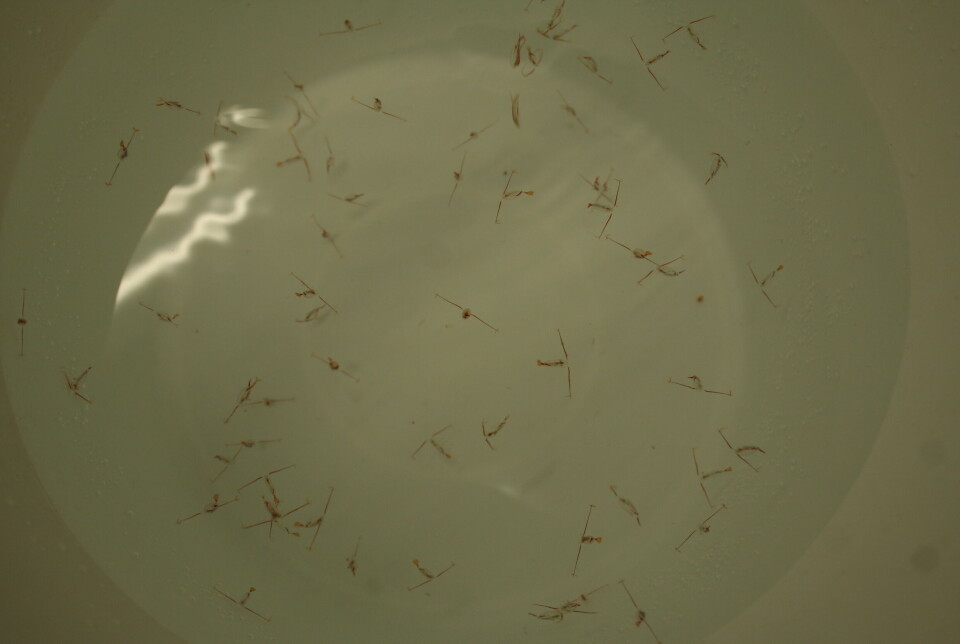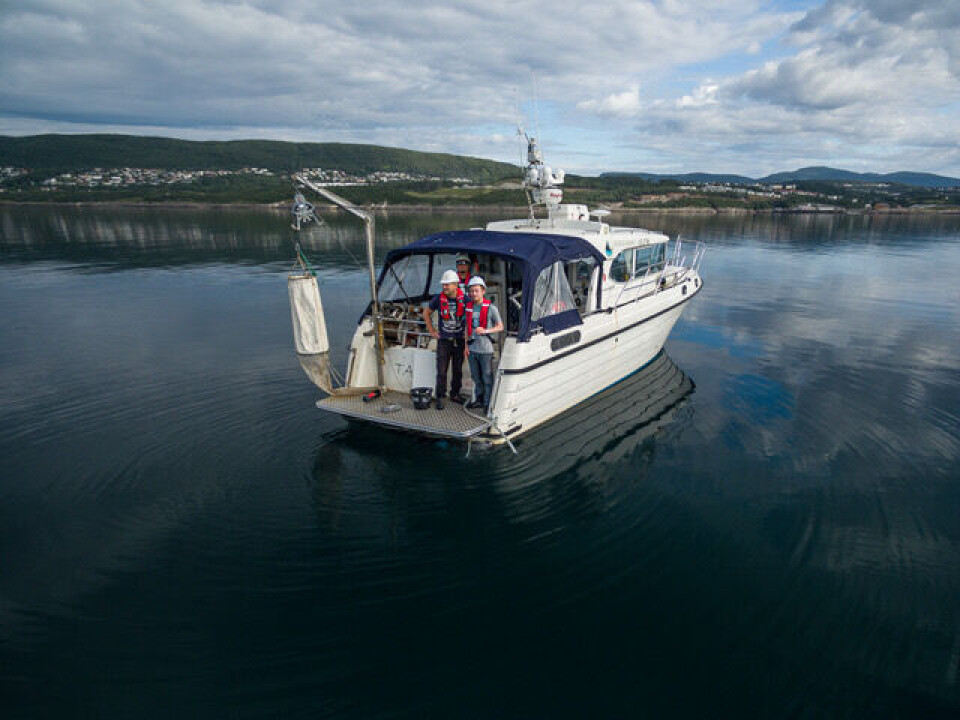THIS CONTENT IS BROUGHT TO YOU BY Nord University - read more

Advanced genetic methods provided clarity on whether two seemingly identical copepods could interbreed
The two copepod species live side by side, reproduce at the same time, and are so similar that they are indistinguishable from one another. But do they interbreed?
Skjerstad Fjord in Nordland county. Stretching out from the narrow outlet at Saltstraumen, it widens and deepens eastwards, forming the inner part of the Salten Fjord. This fjord is widely known for its rich stocks of popular fish species, such as halibut, saithe, and sea trout.
The foundation for this wealth of fish lies in the tiny copepod Calanus. This tiny creature, no more than a few millimetres long, feeds on phytoplankton and stores energy in the form of liquid lipids, oils. This makes it excellent food for small fish larvae.
Potential for significant impact
In the Skjerstad Fjord, multiple species of Calanus are thrive, including the well-known C. finmarchicus and also its Arctic relative, C. glacialis.
"The two species are extremely similar and have overlapping distributions. With an increasingly warmer climate, these overlapping areas will become even larger," says researcher Marvin Choquet.

Researchers at Nord University have discovered that the two species are so similar that genetic methods are required to distinguish them.
The question now is whether species that thrive in warmer waters, like C. finmarchicus, will spread northwards and potentially displace species that thrive best at low temperatures. Closely related species may also begin to interbreed, leading to hybrids.
Should C. finmarchicus displace C. glacialis in the Arctic, it could have dramatic consequences for the marine ecosystems.
A perfect site for crossbreeding
But how can one determine if a tiny, almost transparent copepod, so small it must be observed under a microscope, is a hybrid?
This question has occupied Professor Galice Hoarau's research team for the last decade, particularly after reports of hybrid findings between the two copepod species along the coast of East Canada.
"The question of hybridisation led to quite a heated debate," says Hoarau.
When researchers in Bodø began searching for hybrids, they found none, despite examining samples of zooplankton collected across the entire North Atlantic. This led the researchers to turn their attention to the Skjerstad Fjord.

"We had found both species in the fjord in large numbers throughout the year. We also knew that they would reproduce at the same time. That made the fjord a perfect place to look," says Choquet.
Found no hybrids
Samples from Mistfjorden, north of Bodø, were also included. But the result was the same. Even though they collected samples every month for an entire year, they did not find a single hybrid. How could that be?
The answer lay in the genetic markers used.
"The hybrid findings in Canada were based on the use of microsatellites," says Choquet.
So, what in the world are microsatellites? Here, a bit of basic genetics knowledge might be helpful.
Our genes, as well as those of the copepods), consist of DNA. DNA is composed of four different molecules called nucleotides. These nucleotides contain one of the bases: Adenine, Thymine, Cytosine, or Guanine.
These are abbreviated A, T, C, and G, and can be likened to a sort of genetic alphabet. The four bases are lined up along the DNA strand and can be read as the genetic code or as genetic sequences.

Huge genome
When researchers use genetic markers, they look for very specific sequences on the DNA strand. These can be used as identifiers for a particular species, for example.
Microsatellites are one such marker. They consist of sequences that are repeated a certain number of times, like a scratch on a record. For instance, in one species, the sequence ATC might appear three times in a row. In another species, it could repeat five times.
A cross of the two species would then contain both of these two variants.
"But Calanus has a very complex DNA with many repetitions. This poses challenges when sequencing and analysing it. There's a risk of looking at the wrong regions," Choquet explains.
In other words, one might think that one is looking at microsatellite number one from species A, which is different from microsatellite 1 in species B. This can lead to the mistaken belief that a hybrid is present. However, what is actually being observed might be a microsatellite from a completely different part of the DNA strand.
"That's why we developed six molecular markers, called InDels, designed and tested to be used on Calanus," says Choquet.
InDels are small sequences that have, over the course of evolution, been added (Insertion) or removed (Deletion) from specific areas on the DNA strand.
"The method was designed and tested specifically to look for Calanus hybrids. We analysed samples from the entire North Atlantic and the Arctic Ocean without uncovering hybrids. This suggested that the earlier findings were a result of methodological errors related to these microsatellites," says Choquet.
The findings from Bodø were nevertheless not enough to convince all researchers around the world that the species did not hybridise. This prompted the researchers at Nord University to undertake a more thorough investigation.
Hoarau says they decided to use a more comprehensive approach.
Instead of looking for a few specific areas on the copepod's DNA, they aimed to examine the entire genome.
"The challenge is that Calanus has a very large genome. In every single cell, there is so much DNA that it's almost unmanageable to analyse all of it. Calanus has between two and four times as much genetic information as humans," says Choquet.
Identifying differences
The solution was to look for something known as Single Nucleotide Polymorphisms, abbreviated as SNP and pronounced as 'snips.' A SNP represents a variant where only a single nucleotide is swapped out, effectively just one letter in the genetic code.
To obtain a good representation of such SNPs, random samples from many different regions of the DNA are selected.
"This method allows us to analyse thousands of markers from the entire DNA, not just from a small part of it as with microsatellites and InDels," says Choquet.
By looking for SNPs from areas of the DNA that were overlapping for C. finmarchicus and C. glacialis, they found entirely unique DNA profiles for the two species.
"Our analyses show no signs of hybridisation, which suggests that it's unlikely that the two species can crossbreed," says Choquet.
If you take a water sample from the Skjerstad Fjord and examine it under a microscope, you will likely see specimens of both C. finmarchicus and C. glacialis. But no hybrids.
The two species, which look exactly alike on the outside, are so genetically different that they likely cannot produce viable offspring should they mate with each other.
"It could be due to subtle differences in sexual organs or in pheromones, about which we still know very little," says Choquet.
New questions
The finding that the two species do not hybridise makes it easier for researchers to study the effects of climate changes on ecosystems.
"Now that we know they don't hybridise, we can move forward and study whether each species has one or more populations within their distribution areas," Choquet says.
Returning to the copepods in Skjerstad Fjord: Do the individuals of C. glacialis and C. finmarchicus live isolated within the fjord, sheltered from their conspecifics out in the open sea? Or is there an exchange where individuals from other areas come and mix their genes with the 'fjord dwellers'? Do the 'fjord dwellers' migrate out into the Norwegian Sea and spread their genes there?
This knowledge is crucial for understanding how stable an ecosystem is.
"Getting an overview of the genetic interaction within a species, across its range, is the first step in understanding the extent to which the species can withstand environmental changes," Choquet concludes.
Reference:
Choquet et al. Unmasking microsatellite deceptiveness and debunking hybridization with SNPs in four marine copepod species of Calanus, Molecular Ecology, 2023. DOI: 10.1111/mec.17183

This content is paid for and presented by Nord University
This content is created by Nord University's communication staff, who use this platform to communicate science and share results from research with the public. Nord University is one of more than 80 owners of ScienceNorway.no. Read more here.
More content from Nord University:
-
Kateryna's university has been bombed three times – but she's still teaching
-
5 things you didn't know about smart cities in the Arctic
-
AI sparked an idea that could improve road safety in Norway
-
These algae have been adapting for hundreds of millions of years
-
Could traces of bacteria in water combat salmon disease?
-
Bladderwrack in animal feed has the potential to reduce methane emissions




































